| Umělec 2011/2 >> 79.89.09. | Просмотр всех номеров | ||||||||||||
|
|||||||||||||
79.89.09.Umělec 2011/201.02.2011 Slavs and Tatars | Artists Unite | en cs de |
|||||||||||||
|
Only Solidarity and Patience Will Secure Our Victory
79. 89. 09. looks at three key dates: 1979, 1989, and 2009 in order to better understand the world we live in. Coinciding with twentieth anniversary celebrations across Eastern Europe for the fall of Communism, the financial crisis of 2009 marked another significant shift, as much of the mind as of the pocket, one would hope. While it is rather difficult to interpret the present or recent past, history will have no qualms in putting the financial crisis of the early twenty-first century on equal footing with the late twentieth-century fall of Communism. And perhaps we would better understand the severity of this earlier event, the collapse of communism in 1989, if the US had split up into, say, fifty different republics, as the Soviet Union crumbled into several independent nations. 1979 might strike some as less evident: however, the Iranian Revolution of that year presaged many of the major (and minor) geopolitical issues facing the world today. Considered by political think tanks in the US and Europe to be the second most important event of the twentieth century, after the Russian Revolution of 1917, the Iranian Revolution of 1979 has triggered one of the major geopolitical narratives of the late twentieth and early twenty-first century: revolutionary Islam. In the same way that the events of 1917 defined the world for the following seventy-odd years the arrival of an Islamic theocracy, for the first time in over a millennia via perhaps one of the last truly popular modernist revolutions of the twentieth century, has defined the subsequent thirty years. The debates regarding Islam’s compatibility with modernity, the viability of a political form of Islam and even such tropes as martyrdom first grabbed the attention of the non-Muslim world in 1979 and has, for better or worse, occupied the airwaves ever since. Mohammad Reza Pahlavi, the Shah of Iran with Empress Farah (left), a statue of the Shah torn down in 1979 (right) The Peacock with a wee cock Nothing perhaps best crystalises the rapidity of the Shah’s fall than the celebration of 2,500 years of Iranian monarchy, known as the Peacock Throne, in 1971. With no extravagance spared, an air-conditioned tent city was erected on the site of Persepolis, the ceremonial capital of the Achaemenid Empire, near Shiraz in southern Iran. Maxim’s de Paris did the catering — which included roast peacock stuffed with foie gras — Limoges provided the dinnerware, and Lanvin the uniforms for the Imperial household. 250 red Mercedes Benz limousines shuttled hundreds of presidents, prime ministers and royalty around, in what turned out to be the swan song of the Pahlavi dynasty. Within an eight-year span, the Shah would flee the country, Khomeini would return from exile in Neauphlele-Château, the Iran hostage crisis would bring down the Carter administration and the first Muslim theocracy in more than one thousand years would come into existence. Marguerite Duras (left), Ruhollah Khomeini (right) Meanwhile in Neauphle-le-Château … After more than a decade in exile in Turkey and Iraq, Khomeini spent some time in Neauphle-le-Château, a leafy suburb outside of Paris, where urban legend has it he often ran into Marguerite Duras at the local grocery store. There, the two would discuss which sorts of pasta to buy. There is something strangely touching about Duras, the proto-feminist, proto-communist rubbing shoulders with Khomeini, a man considered by many to be, if anything, the exemplary anti-feminist and anti-communist. Carter being thrown to the sharks (left), Khomeini’s triumphant return to Tehran (right) Out / In President Carter’s defeat by Ronald Reagan with the largest electoral margin, was in large part due to the 444 days Iran hostage crisis. Carter’s inability to resolve the crisis cast him as a weak leader. Perhaps most uncanny of all, was the timing of the release of the hostages — one hour into the inauguration of Ronald Reagan as president, on 20 January 1981. The ‘coronation’ of Khomeini, could be gleaned far before his consolidation of power in the early days of the Iranian Revolution. His return aboard an Air France Boeing — not to mention being escorted by the pilot himself down the stairs to the tarmac — held significant symbolic power, adding a final, gilded legitimacy to a man who had been publicly condemned by the monarchy, whose son had been murdered by the Shah’s secret police, and who had been in exile for more than fifteen years. A Shah supporter (above), a Khomeini supporter (below) and pro-Green movement slogans — Where is my vote? Long live Moussavi! and Death to the regime which tricks its people — on contemporary notes (insets) Money: 1979/2009 Money has often been a platform for civil disobedience. Supporters of the Shah held up Iranian currency with his portrait to show their support, while opposition Khomeini supporters replaced the portrait of the Shah with that of Khomeini. Today, money continues to be used as a medium of protest. Commonly found notes in Iran, such as the 20,000 rial or 2,000 toman and 50,000 rial or 5,000 toman, the equivalent of two and five US dollar bills respectively, are often found marked with slogans of the 2009 presidential protest: ‘Where is my vote?’, ‘Long live Moussavi’, and ‘Death to the regime which tricks its people’. Qaderi Dervish of Kurdistan The Metaphysical versus the Material The Iranian Revolution is the first and only revolution of the modern era to advance a metaphysical agenda. Revolutions are doomed to fail: as anyone remotely familiar with the French or Russian Revolutions can attest to. It is one thing to deliver on certain promises — no matter how lofty, be it a proletarian government, the abolition of the monarchy, etc. — and quite another when the deliverables — salvation, redemption, and the like — are entirely independent of the material world. It begs the question: Is it a stroke of genius or bombastic foolishness to define success in such a way that it cannot be measured in this life? Qaderi Dervish of Kurdistan Theocracy = Rule of God = The Mystical Republic = Rule of Man = The Material The recent unrest in Iran, following the 2009 presidential elections, can actually be traced to the very origins and name of the country. In the name itself — the Islamic Republic of Iran — are two divergent, almost mutually exclusive, governing philosophies: the rule of God found in a theocracy and the rule of man found in a republic. Only once the trauma of the Iran-Iraq war was over and the country returned to a sense of normality did this tension come to the surface, initially with the reformist government of President Khatami. Today, the cleavage continues to grow and delegitimise the Islamic Republic. The reformists (Moussavi, Rafsanjani) want to move the country towards a republican model where there is some minimal sense of accountability to the electorate while the hardliners (President Mahmoud Ahmadinejad, the Supreme Leader Ayatollah Khamenei) have strengthened their belief in a more purist theocracy without the need for public participation or accountability. Between 79. 89. 09., edition 47 of 100, 2009 Choosing not to choose Slavs and Tatars created Between 79.89.09. to actively choose not to choose, be it between East and West, the political and the personal, or the analytical and the affective. Each edition features a different opt-out for the dervish. This one reads: A DERVISH ONCE SAID: BETWEEN WESTERN ALIENATION AND EASTERN SUBMISSION, I’LL TAKE: A NAP. Some of the others include: A FAG, A COKE, A HERMES BAG, etc. Woman at Ashura ceremony, Shariati Avenue, Tehran, 2009 Cash-money-records, Moharram Style While there seems to be a consensus in the West that the Iranian Revolution was a reactionary revolution, one could look at it from behind, as it were, or upside down. Reinstating an Islamic theocracy in the late twentieth century, a form of government that has not existed for more than a thousand years, could, in itself, be seen as a radical act. Imam Ali painted on a water reservoir, near Chak-Chak, Iran The Antimodernists are not Antimodern In his book Les Antimodernes (2005), Antoine Compagnon describes the true modernist not as the utopianists who only look forward (e.g. Vladimir Mayakovsky, F. T. Marinetti) but rather as the ‘anti-modernists’, those somewhat conflicted visionaries deeply affected by the passing of the pre-modern age. As Sartre said about Baudelaire, those who go forward but with an eye in the rear view mirror. Walter Benjamin’s uses a similar trope with his Angel of History, thrust forward with her back to the future but facing the past, as does the Malagasy language which, contrary to most Western, positivist conceptions of time, uses words such as ‘behind’ to describe the future and ‘in front’ to convey the past. The Iranian Revolution of 1979 was in every sense an anti-modernist revolution. Continuity of the Revolution ... ’till the End of Plundering Anti-Imperialist Imperialism Much like the Russian Revolution, the Iranian Revolution of 1979 was a liberationist revolutionary ideology that was subsequently exported beyond its borders. It’s a very interesting dynamic: foreign powers or influences are kicked out before one’s own ideology takes on the airs of those same foreign powers. In this case, several elements of the Iranian Revolution have subsequently spread throughout the Muslim world. Imam Abolfazl (left), Imam Hossein (right) Muslim Monobrows? Good A slightly less successful export, though, is the monobrow. In Iran, the triumvirate of the eyebrows, eyelashes and eyes are the defining traits of beauty. The portraits of the Shi’ite imams — Hossein and Abolfazl — feature strong protruding eyebrows as a sign of virility and courage. To this day, in Iran, a monobrow can help you curry favour with the opposite sex … Former Massachussettes Governor Democratic Presidential Candidate Michael Dukakis, 1988 Gentile Monobrows? Bad … whereas, in the West, as anyone who has spent time with a monobrow at school can attest, they don’t win you points with the girls … or boys, for that matter. Frieze Sculpture Park, 2010 Monobrow — Hot For the Frieze Sculpture Park in 2010, Slavs and Tatars exhibited A Monobrow Manifesto, with Persian epic hero Roustam, from Ferdowsi’s Shahnameh, marked HOT! on one side and … Frieze Sculpture Park, 2010 Monobrow — Not Bert, from Sesame Street, marked NOT! on the other. The monobrow is an epiphenomenon through which we can demystify the accepted wisdom surrounding the conflict between the West and the East. If in the West, the monobrow has been associated with delinquent behaviour (Victorian England) or werewolves (France), in the Middle East and the Caucasus, the monobrow is a sign of virility and sophistication. That is, if in the southern parts of Eurasia, the monobrow is hot, in the US and Europe, it’s clearly not. Resist Resisting God, mirror mosaic, Slavs and Tatars, 2009 Resist Resisting God In 2009, Slavs and Tatars created a piece that, when viewed frontally, looked like another decorative mirror pattern … but from an angle, a text appeared, somewhat mystically: Resist Resisting God. Navab Safavi, revolutionary leader 1924–1955 and Gerasimov’s Lenin (inset) 1917 versus 1979 It requires a certain amount of intellectual acrobatics, if not emotional anxiety, to draw your inspiration or influence from your antithesis. For example, the Iranian Revolution imported wholesale much of its visual language from the Russian Revolution, even though it resulted in a theocratic regime in total contrast to the atheism of the Russian Revolution. A woman catches the eyes of the Shah’s army before the revolution while veiled women turn away from a man, post-revolution. Pre-Revolution / Post-Revolution A British journalist living in Tehran remarked at the time that to require Iranian women to go outside the home without their veils was equivalent to requiring British women to leave the house topless. A big push for the Bolshevik harvest Social Realism: Proletariat Whereas the USSR celebrated the proletariat via the portrayal of the generic, anonymous labourer, the Islamic Republic of Iran, a product of its age, opts for pathos through the excessive portrayal of individual martyrs. George Bernard Shaw once said that the only way for someone without talent or beauty to become famous was martyrdom. It seems unfortunate that the Iran-Iraq war and reality television have done their part to lower the requirements even further. Mural on Hemmat Highway, Tehran Social Realism: Martyrs Nowhere is this more evident than the case of twenty-oneyear- old Mazi Mostaffi who attempted, in a joint mission with the Lebanese Hezbollah, to carry out the fatwa against Salman Rushdie, but died en route from diarrhea. It seems even unsuccessful, incontinent martyrs get their fifteen metres of fame. Horse, Kermanshah (left), The Grapes of Wrath, Qazvin (right) The Undecided Judging by its public art, Iran looks more like Disneyland or a not-so-miniature golf course. Public art and sculpture are among any countries most telling expression of identity. So where the Soviet Union embraced social realism, with monumental sculptures honouring the proletarian hero, the Islamic Republic of Iran trades in magical realism. No statues of past religious clerics are to be found nor any safe bets such as iconic literary figures. The secular left digs the dirt on history’s clerics, who at one point or another all collaborated with colonial powers, while the religious right accuses the likes of Ferdowsi and Omar Khayyam of religious equivocation. So, instead, an idyllic, fantasy world of deer, doves, horses, lions, and grapes is found. Nothing is as politically safe as plants or animals for they lack ideology. This is very much a third way that would make even Blair and Clinton cringe. The mobile church in Poland Drive By Confessionals During the shipyard strikes, the church would come to the protesters to support them in prayer. Iconic Solidarność posters to get out the vote on 4 June 1989. 4 June 1989 The calendar date was a momentous one. Firstly, in Iran the night before, Ayatollah Ruhollah Khomeini died, serving as a distinct if depressing milestone for the Iranian Revolution. What had begun as a truely popular revolution in 1978–79, had by the time of Khomeini’s death resulted in an autocratic, oppressive regime. In China, on the same date, a student movement was brutally crushed in Tiananmen Square. At this fork in the road, Poland had two clear paths before it. Instead of going in the direction of either Iran or China, it opted for a third, unknown route, one that ensured progress and continuity over radicalism. An official attempt to drive the census figures of Catholics down to reflect Poland more accurately Apostasy: Poland Today, among some in Poland, apostasy — the renunciation of one’s religion — is gaining ground as a form of civil disobedience to the growing role of the Catholic Church. Upon birth, many people, even Polish Jews, are automatically counted as Christians for the official census. Some were baptized simply out of tradition or out of fear of not fitting in. A new generation is trying to define Polishness away from the homogeneity of the second half of the twentieth century and closer to what it was in the early twentieth century: a more cosmopolitan, diverse nation. The emblem of the Islamic Republic of Iran, a stylized ‘Allah’ (above), the Achameanid symbol of Zoroastrianism (below) Apostasy: Iran In Iran, apostasy is also being used as a form of civil disobedience. With a long history before Islam’s arrival in the seventh century, many young and old Iranians alike are turning to Zoroastrianism, the religion of pre-Islamic Persia. Its main tenet is summed up in the relatively simple maxim ‘good thoughts, good words, good deeds’ as a form of protest against the absolutism of the Islamic regime. The first monotheistic religion in the world, several tenets of the three main Abrahamic faiths (Judaism, Christianity and Islam) find their origins in Zoroastrianism.
01.02.2011
Рекомендуемые статьи
|
|||||||||||||
|
04.02.2020 10:17
Letošní 50. ročník Art Basel přilákal celkem 93 000 návštěvníků a sběratelů z 80 zemí světa. 290 prémiových galerií představilo umělecká díla od počátku 20. století až po současnost. Hlavní sektor přehlídky, tradičně v prvním patře výstavního prostoru, představil 232 předních galerií z celého světa nabízející umění nejvyšší kvality. Veletrh ukázal vzestupný trend prodeje prostřednictvím galerií jak soukromým sbírkám, tak i institucím. Kromě hlavního veletrhu stály za návštěvu i ty přidružené: Volta, Liste a Photo Basel, k tomu doprovodné programy a výstavy v místních institucích, které kvalitou daleko přesahují hranice města tj. Kunsthalle Basel, Kunstmuseum, Tinguely muzeum nebo Fondation Beyeler.
|







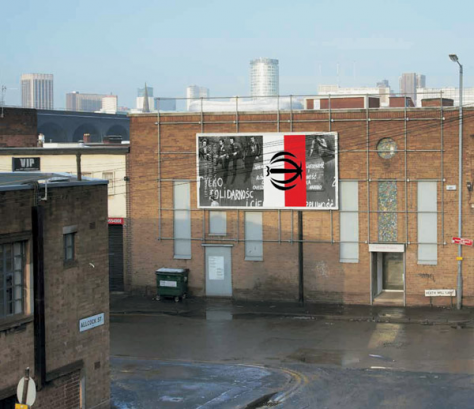






























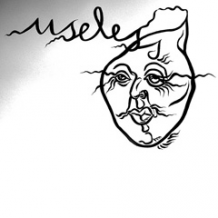






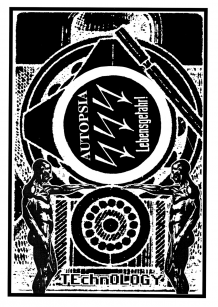




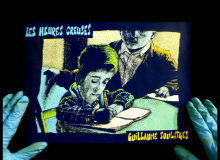
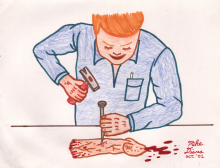
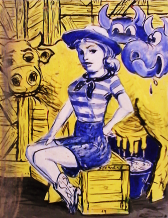



 We Are Rising National Gallery For You! Go to Kyjov by Krásná Lípa no.37.
We Are Rising National Gallery For You! Go to Kyjov by Krásná Lípa no.37.
Комментарии
Статья не была прокомментированаДобавить новый комментарий